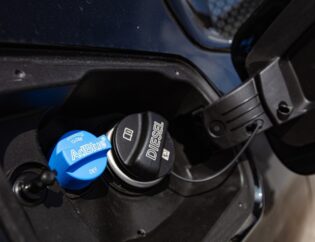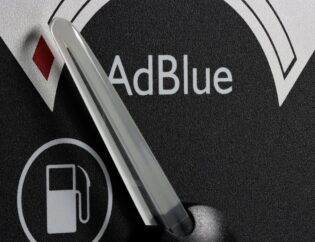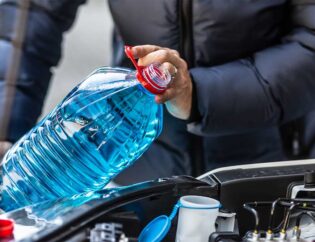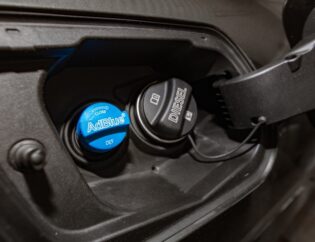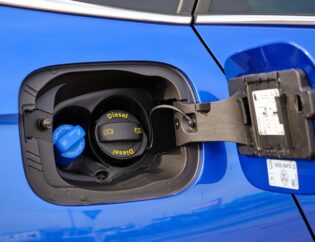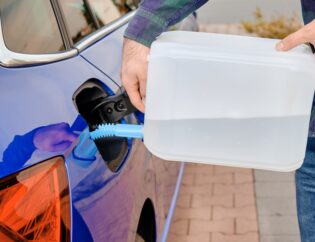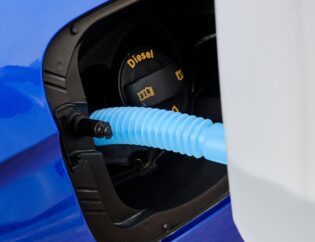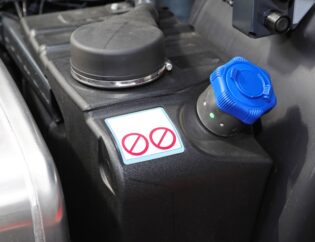
DEF became widely used in the late 2000s to help diesel vehicles meet emissions standards the Environmental Protection Agency (EPA) set. New diesel vehicles manufactured after 2010 use DEF as part of their emissions control systems.
DEF is a clear, non-toxic liquid sprayed into a vehicle’s exhaust stream before the catalytic converter. The NOx is transformed into innocuous nitrogen and water vapor through a chemical reaction that takes place when hot exhaust gases combine with DEF in the presence of a catalyst. This allows diesel vehicles to pass emissions tests and meet EPA standards.
DEF has succeeded in dramatically lowering the NOx emissions from diesel vehicles. By converting NOx into nitrogen, DEF helps minimize the amount of smog-forming NOx released into the atmosphere from diesel engines’ tailpipes. Learn more in this blog by Azure chemical.
Contents
Why is DEF Needed?
Modern diesel engines produce harmful nitrogen oxide (NOx) emissions as a byproduct of combustion. NOx emissions contribute to smog, acid rain, and respiratory problems in humans.
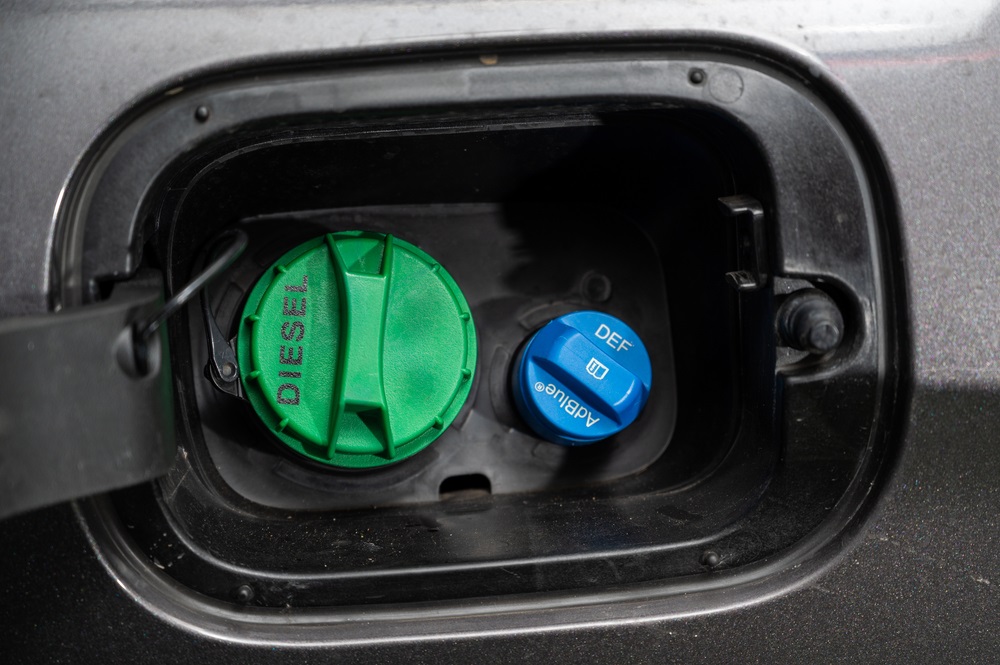
To address these issues, stringent emissions regulations have been enacted in many countries, requiring diesel engines to minimize NOx output. This is where Diesel Exhaust Fluid (DEF) comes in.
DEF is a liquid solution sprayed into diesel vehicles’ exhaust streams. It chemically converts NOx into harmless nitrogen and water vapor, allowing diesel engines to comply with NOx emissions regulations.
Without DEF, modern diesel engines would be unable to meet the emissions standards. Diesel engines now have a vital tool in DEF to lessen their environmental effect without sacrificing performance or economy. Diesel technology has advanced in an environmentally beneficial path thanks to its utilization.
How Does the DEF System Work?
The purpose of the Diesel Exhaust Fluid (DEF) system is to lower the emissions of nitrogen oxide (NOx) produced by diesel engines.
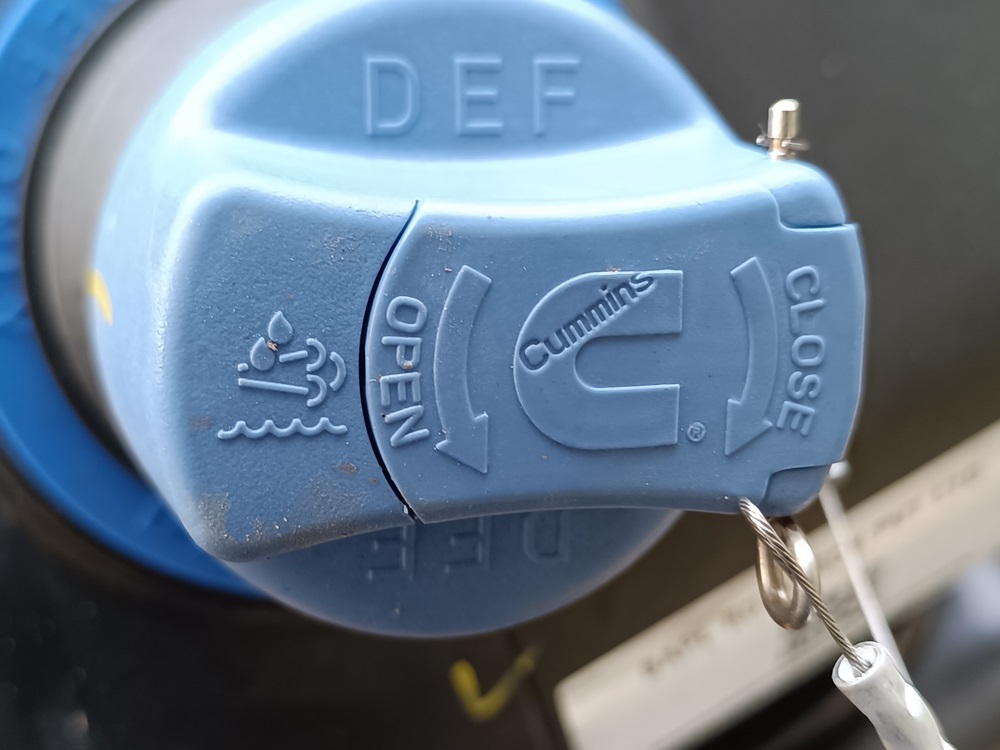
Here is an overview of how the system works:
The DEF tank stores the DEF fluid, a carefully mixed aqueous urea solution. It is typically made of plastic and located somewhere convenient, like near the fuel tank. Depending on the vehicle, it can hold 5-10 gallons of fluid.
As the exhaust gases leave the engine, the DEF injector sprays a fine mist of DEF into the hot exhaust stream before it enters the catalytic converter. The DEF immediately converts into ammonia gas upon hitting the hot exhaust temperatures.
In the catalytic converter, the ammonia combines with the NOx emissions. This starts a chemical reaction that turns the toxic NOx into nitrogen gas and water vapor, two innocuous byproducts.
The nitrogen and water vapor then safely exit the tailpipe instead of NOx. This reaction happens continuously as the engine operates, reducing NOx emissions by up to 90%.
So, in summary, the DEF tank stores the fluid, the injector sprays it into the exhaust, and the catalytic converter converts the NOx into nitrogen and water – drastically reducing the pollutants from the tailpipe. Proper DEF levels are critical for the system to function effectively.
DEF Fluid Composition
Diesel Exhaust Fluid (DEF) comprises 32.5% high-purity urea and 67.5% deionized water. The urea content is crucial for reducing NOx emissions.
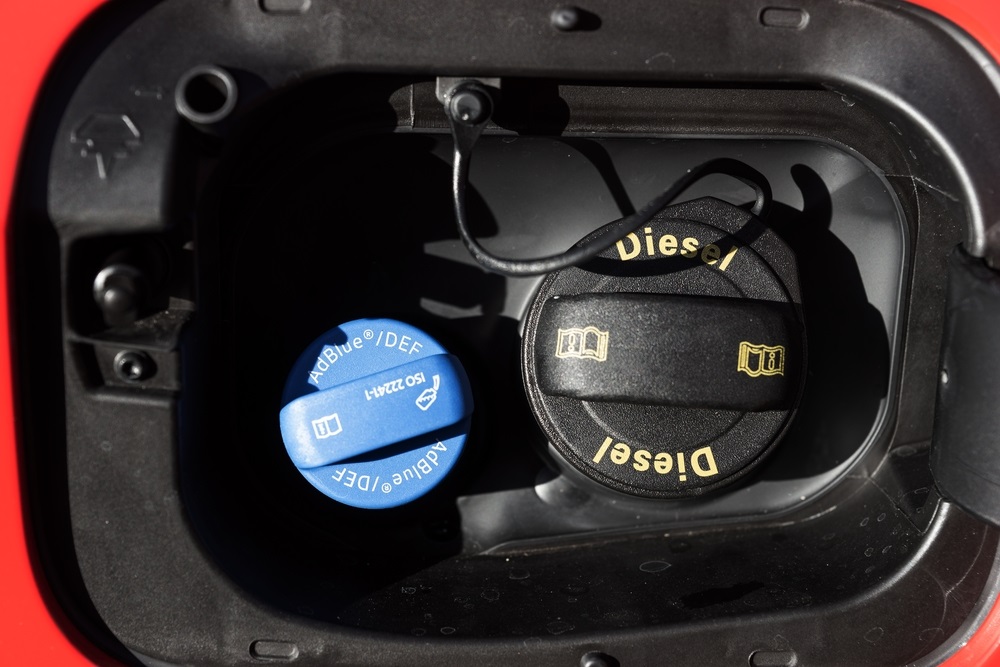
Ammonia is created when urea is introduced into the exhaust stream and breaks down. Following this ammonia’s reaction with the NOx emissions, nitrogen and water vapor are produced. DEF is able to drastically lower the NOx emissions from diesel engines thanks to this chemical process.
The purity of the area is very important. Standard-grade urea contains high impurities, like biuret, that can damage catalytic converters and clog injectors. DEF uses pharmaceutical/ultra-high-purity grade urea to avoid these issues.
The deionized water ensures the solution does not corrode system components or leave deposits. It also helps to dissolve the urea content fully.
In summary, DEF’s 32.5% urea and 67.5% deionized water composition are carefully formulated to enable effective and reliable NOx reduction in modern diesel vehicles. The urea converts to ammonia, which reacts with NOx, while the water prevents corrosion and dissolution issues.
Ideal DEF Operating Temperature
Diesel exhaust fluid (DEF) needs to be maintained between a certain temperature range in order to function at its best and prevent freezing. Since DEF freezes at about 12°F (-11°C), it’s critical to keep the fluid above this temperature while storing it.
All diesel vehicles with selective catalytic reduction (SCR) emission control systems have a DEF heating system to maintain the fluid’s temperature. This is usually an electric heater built into the DEF tank and supply lines. The system will activate when the engine is started in cold weather to warm the DEF and circulate it gently through the lines.
While DEF must be kept from freezing, too much heat can degrade the urea solution. Extended exposure to temperatures higher than 90°F (32°C) will cause the urea to degrade and lessen the efficacy of the DEF. The DEF should be maintained between 12 and 90°F, according on the vehicle’s heating system design.
Maintaining proper DEF temperature is crucial for the emissions system to function correctly. Frozen, overheated, or degraded DEF can lead to the vehicle entering a limited operating mode. DEF will provide optimal NOx reduction by keeping the tank filled and avoiding temperature extremes.
DEF Tank
The diesel exhaust fluid (DEF) tank stores the DEF fluid needed for the selective catalytic reduction (SCR) system.
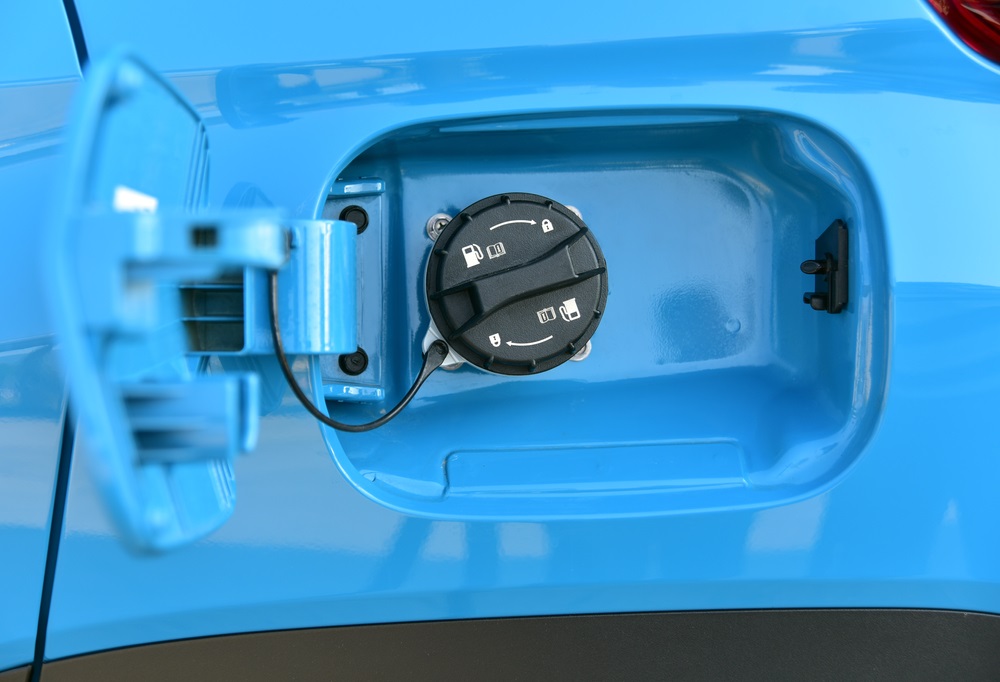
It is a critical component that allows the DEF system to function properly.
The DEF tank is a durable plastic that can withstand vibration from driving and road debris. It typically has a 10-15 gallon capacity, allowing adequate DEF storage between refills.
The tank has a filler neck for easily adding new DEF fluid when the level gets low. A level sensor monitors the DEF level and alerts the driver when it needs to be refilled.
One unique aspect of the DEF tank is its small heater. This heater helps maintain the proper DEF fluid temperature for optimal performance. The ideal temperature for DEF is between 10-30°C. If the DEF freezes, it can cause system malfunctions. The heater turns on when needed to thaw frozen DEF and keep it in the optimal temperature range.
With its careful construction and temperature controls, the DEF tank provides reliable storage and delivery of DEF for the SCR system. Proper maintenance and fluid refills help ensure the tank functions as designed. The tank allows the DEF system to reduce NOx emissions and effectively meet environmental regulations.
Adding DEF
The diesel exhaust fluid (DEF) tank needs to be refilled periodically, usually every 1,000-10,000 miles, depending on the tank size. When refilling the tank, it’s important to only add certified DEF brands, as using an incompatible fluid can damage the DEF system.
To find out how often to replenish your DEF tank, go to the owner’s manual. The size of the tank and the distance between refills are detailed in the handbook. You can travel farther between refills if you have a larger tank.
Do not overfill the tank when adding DEF to the pump or filling containers. Sparingly Overfilling can lead to leaks, damage to the tank, and DEF crystallization issues. Stop pouring once the tank is full. Most DEF fill necks have mechanisms to prevent overfilling.
Proper DEF tank maintenance ensures the emissions control system functions as intended. Keep the tank filled to the appropriate level and only use DEF grades that meet ISO 22241 specifications. With routine refills, the DEF system will operate smoothly for many miles.
DEF Warning Lights
The DEF system has a dedicated warning light on the dashboard that alerts drivers when the DEF level is low.

This warning light will illuminate when the tank level drops below a certain threshold, generally around 10% full.
The warning light starts as a steady glow, indicating that the DEF supply is running low. This is the first alert for the driver to add more DEF at their next convenient stopping point. The light will start flashing if the warning is ignored and the tank level drops. A flashing DEF light means the tank is nearly empty.
At this point, it becomes crucial to refill the tank as soon as possible. If the tank runs completely dry, the vehicle will go into a power-limited “limp mode.” Engine power is drastically reduced in limp mode, and speed is limited to just 5-20 mph. This forces the driver to address the issue before continuing normal operation.
The limp mode failsafe protects the emissions control system. Without DEF, the SCR catalyst can’t reduce NOx emissions as designed. Running empty would quickly exceed emissions limits, so the vehicle restricts power output to force refilling the tank. Monitoring the DEF gauge and warning lights prevents them from reaching this point. Prompt action keeps the DEF system operating smoothly when the light first comes on.
DEF Cost
Diesel Exhaust Fluid costs between $3-5 per gallon on average. For most drivers, this equates to an extra annual cost of $100-200 to fill the DEF tank. While it does add some marginal cost compared to overall diesel fuel expenses, the total cost remains quite low. Most diesel pickup truck drivers only need 2-3 gallons of DEF every oil change or roughly every 5,000 – 7,500 miles. DEF has a long shelf life and doesn’t require frequent replacement like oil does. Overall, the DEF system and fluid are an inexpensive way to meet modern diesel emission regulations compared to other exhaust treatment systems. The minor DEF cost is well worth its environmental and performance benefits.
Importance of Proper DEF Maintenance
Proper maintenance of the diesel exhaust fluid (DEF) system is critical to avoid problems and ensure proper operation. Here are some key maintenance tips:
Keep the DEF Tank Filled
Never always keep the DEF tank running high and full. If the level runs too low, it can trigger a limp mode that severely limits engine power. Always keep the tank topped off according to the manufacturer’s recommendations.
Only Use Certified DEF Brands
Use only brands of DEF fluid that meet ISO 22241 specifications. Off-brand or poor-quality DEF can contain impurities that clog and damage DEF system components. Stick with reputable brands from the manufacturer, truck stop, or auto parts store.
Adhere to Manufacturer Fill Frequency
Follow the DEF fill frequency recommended in your owner’s manual. This varies by vehicle but is typically every 2,000-8,000 miles. Mark your mileage at each fill-up.
Check the Tank Heating System
Many DEF tanks have heaters to prevent the urea fluid from freezing in cold weather. Make sure this is functioning properly so the DEF doesn’t crystallize. Check indicator lights and have the heater serviced if issues arise.
Frequently Asked Questions
You asked, we answered:
What Is a DEF Tank?
A DEF (Diesel Exhaust Fluid) tank is a separate storage container found in many modern diesel vehicles. It stores the DEF solution, a mixture of de-ionized water and urea, which is used to break down harmful NOx emissions into harmless nitrogen and water.
How Does a DEF Tank Work?
The DEF tank works by storing the DEF solution until it’s required by the SCR (Selective Catalytic Reduction) system. When the diesel vehicle operates, a small amount of DEF is sprayed into the exhaust stream. This solution then breaks down dangerous NOx emissions into harmless nitrogen and water, significantly reducing the vehicle’s emissions.
Why Is a DEF Tank Important?
The DEF tank is crucial for reducing the harmful NOx emissions produced by diesel engines. By storing and supplying DEF to the SCR system, the DEF tank contributes to a cleaner environment and helps the vehicles comply with stringent emission norms.
How Often Does a DEF Tank Need to Be Refilled?
The frequency of DEF tank refills depends on the vehicle’s fuel usage. Typically, a tank of DEF lasts roughly as long as 1,000 to 1,500 miles worth of diesel fuel. However, always check the DEF levels regularly and refill as needed to ensure proper functioning.
In Conclusion
We’ve talked about the definition of DEF tank and its impact on your vehicle. Proper DEF fluid maintenance keeps the system running cleanly and prevents costly repairs. Following these tips will help avoid limp mode or other issues that can happen when maintenance is neglected. Additionally, you could visit Azure Chemical’s website to schedule high-quality DEF today.


